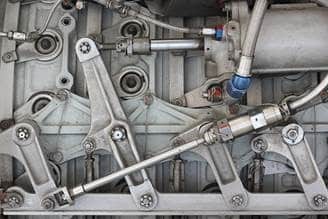Hydraulic Injection Injury – A Surgical Emergency
Employees who work on or around hydraulic power systems are at risk of suffering a hydraulic injection injury. The people most at risk include those who maintain, service, repair and troubleshoot hydraulic power systems such as assembly line workers, diesel engine technicians and workers who operate hydraulic power tools.
Hydraulic injection is defined as the puncturing of the epidermis by a jet of fluid under pressure and hydraulic injection injury is the term used to describe an injury sustained by an individual following an injection of fluid, usually while operating or inspecting pressurized hydraulic equipment. Whilst reported incidence of injury through hydraulic injection are comparatively uncommon in Ireland, the risk of injury is common to all hydraulic equipment, can occur at relatively low pressures and the consequences can be devastating involving loss of limb function, amputation and, in some cases, even death.
Hydraulic injection injuries are almost entirely occupational and sustained by predominantly male manual workers, both skilled and unskilled, with injuries mostly sustained to the palm or parts of the digits of the non-dominant hand. There is a lack of understanding of the potential severity of injuries of this type on the part of the injured parties and also on the medical professionals which is a barrier to effective treatment. This lack of comprehension appears largely due to the apparent benignity of the initial presentation of the wound. The wound itself will consist of simply a pin prick or prod, if at all, and if left untreated, hydraulic injection injuries will invariably result in the necrosis of the affected tissue requiring subsequent amputation of finger(s) or indeed hand.
A hydraulic injection injury is a medical and surgical emergency. An employee who suffers a hydraulic injection injury should be referred immediately to the Accident & Emergency Department of their local hospital and undergo a washout and debridement procedure under general anaesthetic. This procedure will seek to clean out the tissue and reduce the risk of amputation if debridement occurs within six hours of injury. The patient must not be taken to a local GP, they should attend the Accident & Emergency Department immediately to treat the injury surgically. The time to receiving treatment is critical in order to give the patient the best possible chance of having a positive outcome and chance of recovery.
Ronan Hynes, Partner in the Serious Injury Department commented that “hydraulic injection injuries are uncommon but should they occur they must be treated as a medical emergency as they require prompt and accurate diagnosis and treatment – often requiring surgery. The time to receive the correct treatment is critical in order to give the patient the best possible chance of having a positive outcome and full recovery. Unfortunately, the rate of amputation with these injuries is quite high if treatment is not received almost immediately.”
Should you have any queries in relation to the above, please contact Ronan Hynes, Partner in the Litigation Dispute Resolution Department at 061 432 348 or by email at [email protected].

